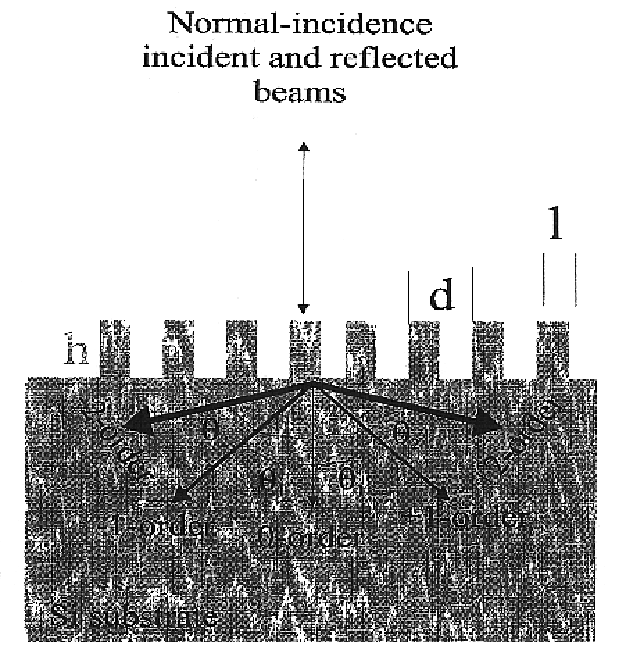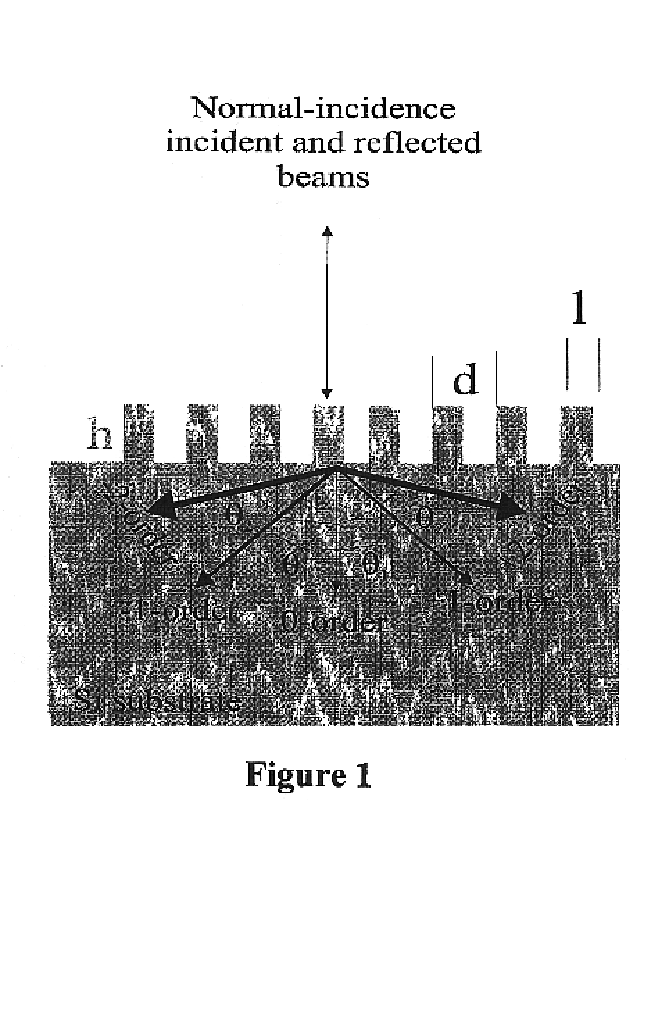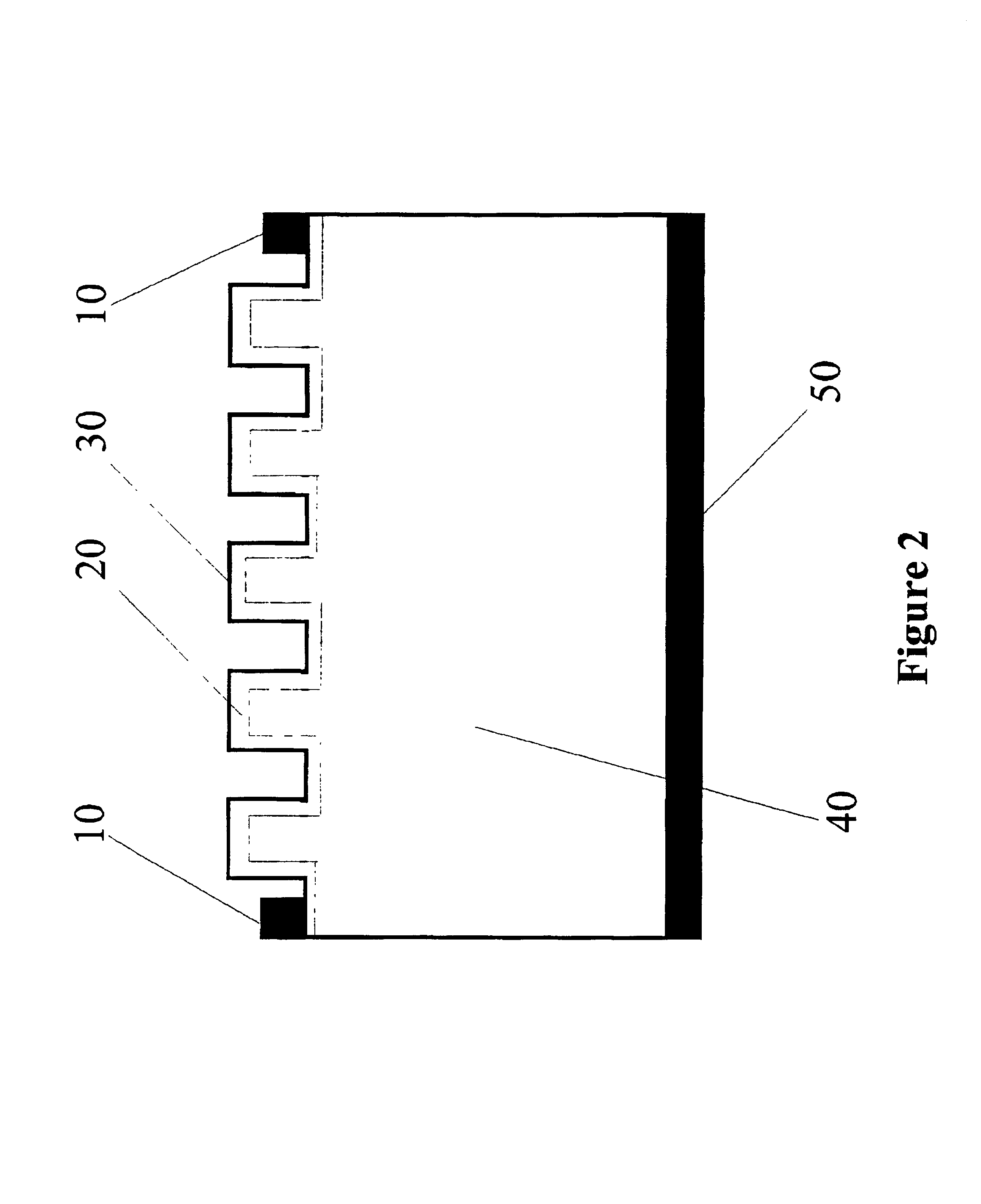Enhanced light absorption of solar cells and photodetectors by diffraction
a technology of solar cells and light absorption, applied in the field of solar cells and photodetectors, can solve the problems of limited application of low-cost, multi-crystalline (mc) si, and the inability to benefit from recent advances in diffractive optics, and achieve the effects of increasing improving the performance of thin-film solar cells, and improving the absorption of light radiation
- Summary
- Abstract
- Description
- Claims
- Application Information
AI Technical Summary
Benefits of technology
Problems solved by technology
Method used
Image
Examples
Embodiment Construction
t measurements from one-dimensional gratings shown in FIG. 13.
[0028]FIG. 15 shows SEM picture of a random silicon surface formed by maskless reactive ion etching.
[0029]FIG. 16 shows IQE measurements from random RIE surface solar cell, also plotted for comparison is planar surface response.
[0030]FIG. 17 shows IQE measurements from random RIE surface solar cell with ion-implanted surface junction, also plotted for comparison is planar surface response.
[0031]FIG. 18 shows IQE measurements from the same one-dimensional grating solar cells before and after application of anti-reflection films.
[0032]FIG. 19 shows the variation of propagation angles of the transmitted diffraction orders inside silicon, at a fixed period, as a function of wavelength.
[0033]FIG. 20 shows the calculated, polarization-dependent, diffraction efficiencies for 0.65-μm period one-dimensional gratings for rectangular (a) and triangular (b) profiles.
[0034]FIG. 21 shows the calculated, polarization-dependent, diffract...
PUM
 Login to View More
Login to View More Abstract
Description
Claims
Application Information
 Login to View More
Login to View More - R&D
- Intellectual Property
- Life Sciences
- Materials
- Tech Scout
- Unparalleled Data Quality
- Higher Quality Content
- 60% Fewer Hallucinations
Browse by: Latest US Patents, China's latest patents, Technical Efficacy Thesaurus, Application Domain, Technology Topic, Popular Technical Reports.
© 2025 PatSnap. All rights reserved.Legal|Privacy policy|Modern Slavery Act Transparency Statement|Sitemap|About US| Contact US: help@patsnap.com



